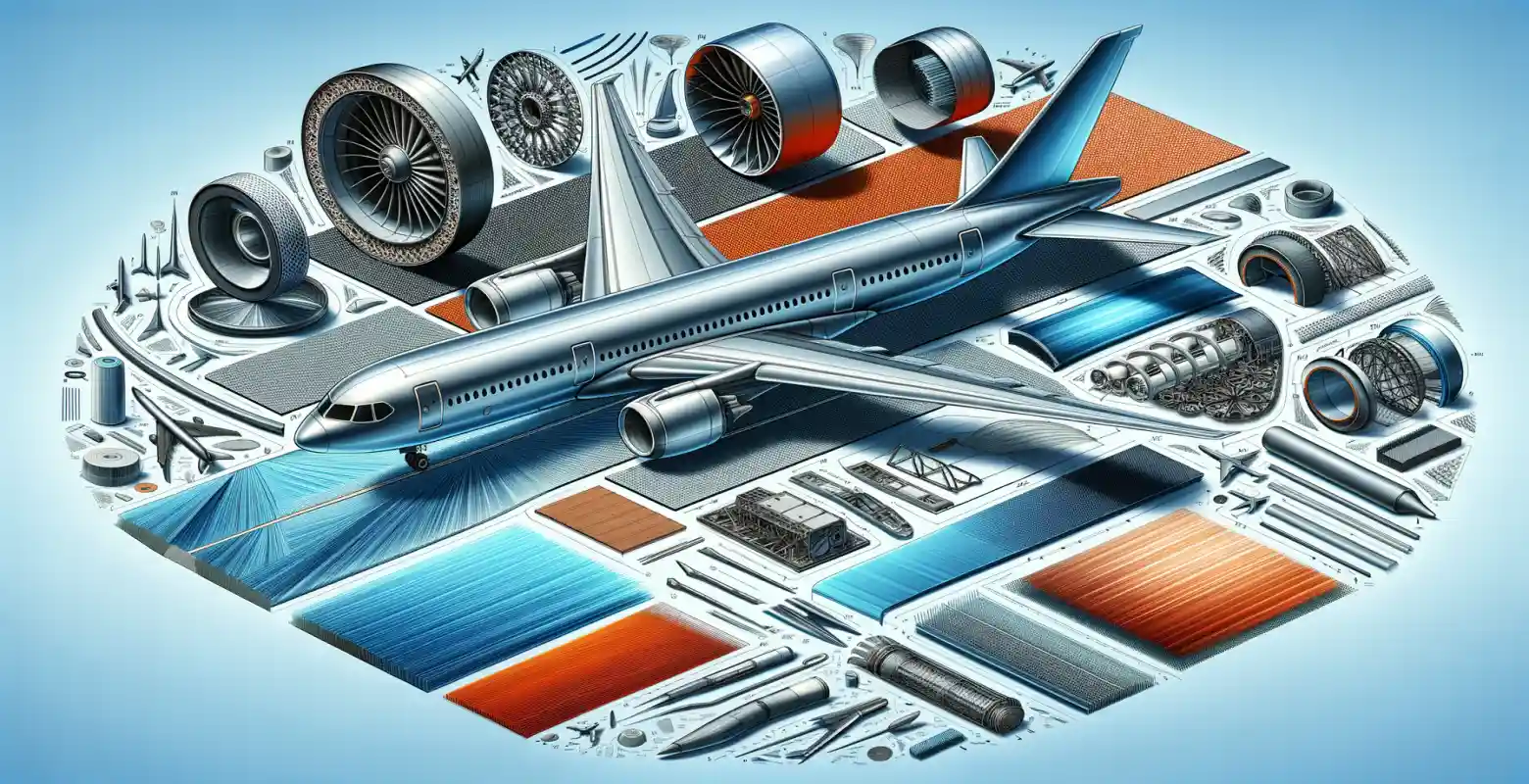New composite materials in aircraft construction
Introduction
The modern aviation industry is constantly evolving, aiming to increase the efficiency, safety, and eco-friendliness of its products. One of the key directions of these changes is the use of new composite materials in aircraft construction. These materials allow for weight reduction, increased strength, and improved aerodynamic properties of aircraft. In an era of growing environmental protection requirements and economic efficiency, their role becomes even more significant. In this article, we will take a closer look at this fascinating topic, discuss the benefits and challenges associated with new composite materials, and outline future trends in this field.
History and Development of Composite Materials
The first composite materials began to be used in aviation as early as the 1960s, but their true development occurred only in recent decades. Initially limited to small structural elements, advancements in production technology and research on new materials allowed for their broader application. Contemporary aircraft, such as the Boeing 787 Dreamliner or Airbus A350, utilize composites in over 50% of their construction. Materials like carbon fiber, glass fiber, or Kevlar have become the foundation of modern aerospace engineering.
What are Composite Materials?
Composite materials are multicomponent materials that combine at least two different materials to achieve properties that are not possible to attain by a single material. They usually consist of a matrix (e.g., polymer resin) and reinforcement (e.g., carbon fibers), which together create a structure with high strength and low weight. Thanks to these properties, composites are ideal for applications in the aviation industry, where reducing weight and increasing fuel efficiency are crucial.
Advantages of Using Composite Materials
One of the main advantages of composite materials is their low weight while maintaining high strength. Lighter aircraft mean lower fuel consumption, resulting in reduced operational costs and a smaller environmental impact. Additionally, composite materials are corrosion-resistant, increasing their durability and reducing the need for frequent repairs and maintenance.
Composites also offer greater design flexibility. They enable the creation of more aerodynamic shapes, further improving the energy efficiency of aircraft. Introducing new composite materials allows engineers to take an innovative approach to design, resulting in new technical solutions.
Challenges Associated with Composite Materials
Despite numerous advantages, composite materials also present certain challenges. One of them is the production cost. The process of manufacturing composites is typically more complex and costly than traditional materials, requiring specialized equipment and skilled personnel, which can raise initial investment costs.
Another challenge is the recycling of composite materials. Due to their complex structure, composites are more challenging to process than traditional materials like aluminum. The aviation industry must therefore develop new technologies and processes that will enable efficient recycling of these materials.
The Future of Composite Materials in Aviation
The future of composite materials in aviation looks promising. With technological advancements, production costs will decrease, making them more accessible for a wider range of applications. The development of new, even more advanced composites, such as nanocomposites, may revolutionize the aviation industry, offering even better mechanical and chemical properties.
In the coming years, we can expect a greater emphasis on sustainable development and eco-friendly solutions in aviation. In this context, composite materials will play a key role in helping achieve goals related to environmental protection and CO2 emission reduction.
Summary
The use of new composite materials in aircraft construction is a topic that is gaining importance with the increasing demands of the aviation industry. Their application allows for significant enhancement of the efficiency and eco-friendliness of aircraft, as well as opens up new design possibilities for engineers. Although the introduction of composites comes with certain challenges, such as production costs or recycling difficulties, the benefits of their use outweigh these challenges. In the future, we can expect further development of this technology, bringing new, innovative solutions for the aviation industry.






Number of comments: 0